




Your support is critical to our success.
- Encyclopedia of SUCCULENTS
- Encyclopedia Index
- Families
- Genera
- Species
- Geraniaceae
- Pelargonium
- Caudiciforms
Since 4 Aug 2013
Pflanzenr. (Engler) Geraniac. 383, in syn. 1912
Family: GERANIACEAE
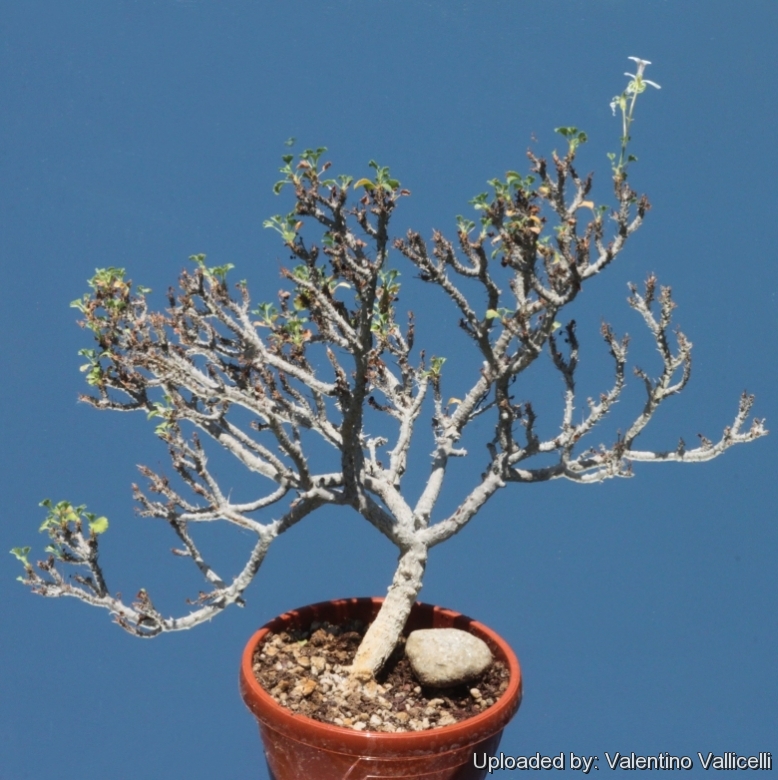
Origin and Habitat: Pelargonium xerophytonSN|27705]]SN|27705]] grows in the Richtersveld, the north-western corner of South Africa as well as in the southern to central parts of Namibia in a belt about 250 km wide along the coast.
Habitat and ecology: It is a summer dormant plant surviving in the shelter of rocks along with Conophytum halenbergense, Haemanthus coccineusSN|32992]]SN|32992]] plus many other geophytes.
Synonyms:
- Pelargonium xerophyton Schltr. ex R.Knuth
ENGLISH: Desert Geranium
RUSSIAN (Русский): Пеларгония ксерофитная
Description: Pelargonium xerophyton is a caudiciform member of the large and varied genus Pelargonium. This means that it has thick branched succulent stems that retain water, a survival feature in its arid habitat. It forms a tiny gnarled tree shape with very small fleshy leaves that can be trimmed to suit taste. It has white, usually solitary flowers, the upper petals are narrow with a crimson blotch.
Habit: It is a compact, semi-deciduous, shrubby, perennial succulent plant reaching a height to 45(-60) cm only in especially favourable conditions (usually only 10-30 cm tall) and profusely branched from the main stem.
Stems: Main stem (trunk) thick and almost woody, up to a diameter of nearly 2 cm. Lateral branches, glabrous, thin (3-5 mm), petioles persistent, internodes up to a few mm.
Leaves: Small, crowding at the stem tips, dull to blue-green, about 1 cm long and broad, round, obovate to cuneate, dentate especially near the apices with widely spaced short glandular hairs. Petiole c.1 cm long, stipules triangular, 1x1 mm. Leaves dry out in summer when the plant flowers.
Flowers: Usually solitary or in pairs on a peduncle up to 15 mm, at the tips of branches, white, rarely pink or cream with small feathery pink or purple markings on the top two petals. Pedicel 1-2 mm long. Sepals 5, lanceolate, 7-10 mm long, 1.5-3.5 mm wide. Hypanthium 1-2.5 cm long. Petals subequal, posterior recurved, up to 20 x 5 mm, with linear markings, obovate, anterior slightly smaller, slightly recurved. Stamens 7 fertile, of four different lengths. The pollen is noticeably orange.
Chromosome number: 2n = 22, 44
Bibliography: Major references and further lectures
1) Urs Eggli “Illustrated Handbook of Succulent Plants: Dicotyledons” Springer, 2002
2) Maria Lis-Balchin “Geranium and Pelargonium: History of Nomenclature, Usage and Cultivation” CRC Press, 02/Sep/2003
3) National Botanic Gardens “Annals of Kirstenbosch Botanic Gardens” Volume 16 National Botanic Gardens, 1988
4) Foden, W. & Potter, L. 2005. Pelargonium xerophyton Schltr. ex R.Knuth. "National Assessment: Red List of South African Plants" version 2014.1. Accessed on 2014/06/07
5) Pflanzenreich, IV, 129 383. 1912
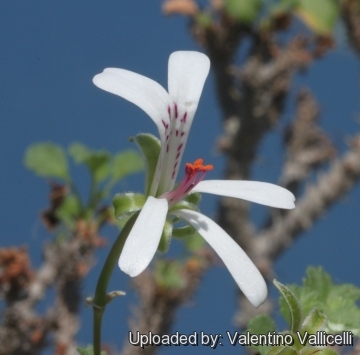
Pelargonium xerophyton Photo by: Valentino Vallicelli

Pelargonium xerophyton Photo by: Valentino Vallicelli
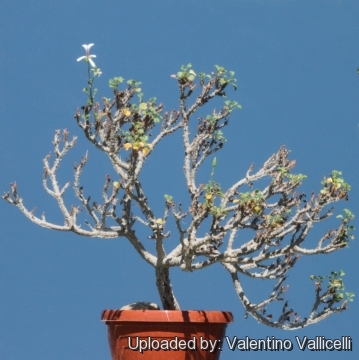
Pelargonium xerophyton Photo by: Valentino Vallicelli
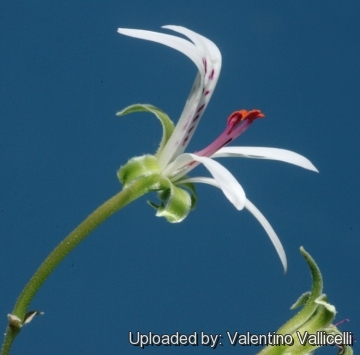
Pelargonium xerophyton Photo by: Valentino Vallicelli
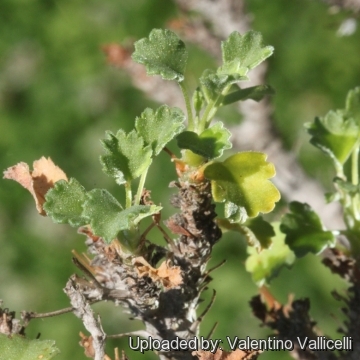
Pelargonium xerophyton Photo by: Valentino Vallicelli
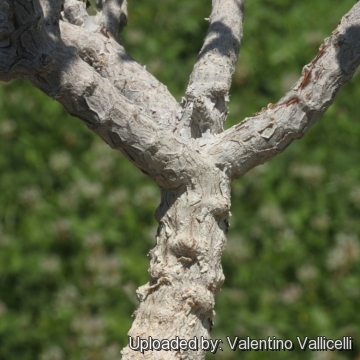
Pelargonium xerophyton Photo by: Valentino Vallicelli
Cultivation and Propagation: Pelargonium xerophytonSN|27705]]SN|27705]] grows on winter rain and heads for summer dormancy. The growing season in northern hemisphere is from September to March. It is a great bonsai subject forming a miniature tree shape. Paying attention to the particular growing requirement of Pelargonium xerophytonSN|27705]]SN|27705]] is especially important. If you provide it with the right conditions, it will reward you with its unique shape and size. However, this is a tricky plant that is very particular about its growing conditions and require the right maintenance in order to keep happy.
Soil: It does best with a mix that has almost no organic material at all. Perlite can be substituted for pumice, but it tends to rise to the surface of the mixture. It can grows outdoor in sunny, dry, rock crevices (protection against winter wet is required).
Repotting: Avoid to repot frequently. This plant may stay in the same pot for many years.
Fertilization: Be careful not to apply too much fertilizer. Feed it once during the growing season with a fertilizer specifically formulated for cactus and succulents (poor in nitrogen), including all micro nutrients and trace elements diluted to ½ the strength recommended on the label. It thrives in poor soils and need a limited supplies of fertilizer to avoid the plants developing excess vegetation, which is easily attacked by fungal diseases. Ensure a very good ventilation.
Watering: Water from early February to late April, then from early August to late November, at a minimum temperature of +14° C. Keep completely dry in summer and winter, at a minimum temperature of +8° C. Pelargonium xerophytonSN|27705]]SN|27705]] in cultivation is usually so overwatered and overfertilized that it is hardly recognizable as the species that it is. Correctly grown, this is a beautiful, compact and dense plant.
Hardiness: Protect from frost.
Exposure: Light shade or morning sun in summer (avoid direct sun as it grows wild among rocks and under the shade of other plants) and in summer it need to be kept in a cool area.
Reproduction: There are two main ways to propagate members of the genus Pelargonium. Plant seeds any time of the year, but a spring or autumn sowing of seeds is usually most successful. Seeds need cool temperature to sprout. Rooting cuttings of stems is another method. Germination can be very erratic, and can take place over a long period of time. There is a way of overcoming the long time periods and the inhibitors; that is, by scarifying the seeds.
| Your Actions | |
|---|---|
| Back to Pelargonium index | |
| Back to Geraniaceae index | |
 |
Back to Succulents Encyclopedia index |
Privacy stantement - Terms and conditions - How to cite - About us - Feedback - Donate




